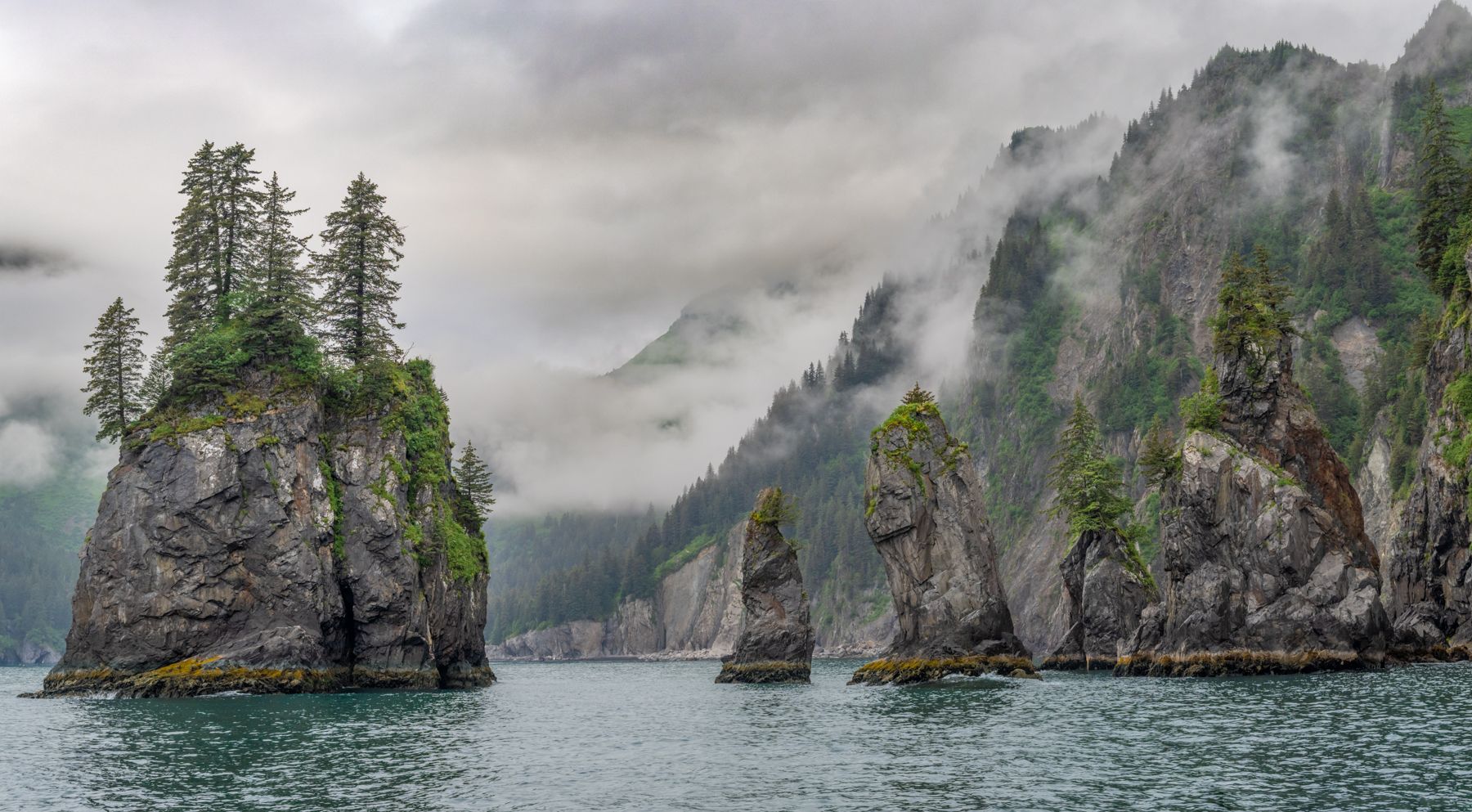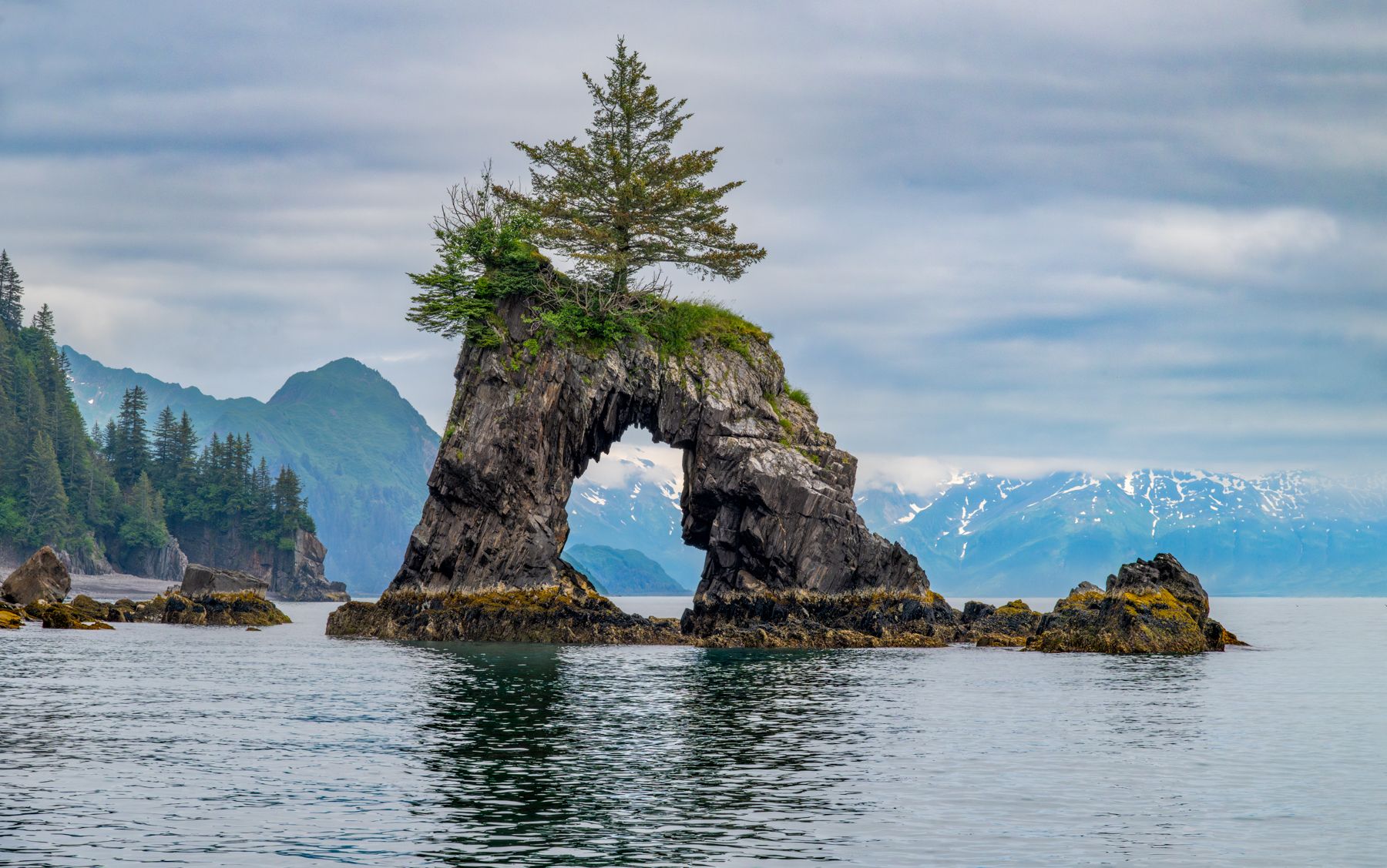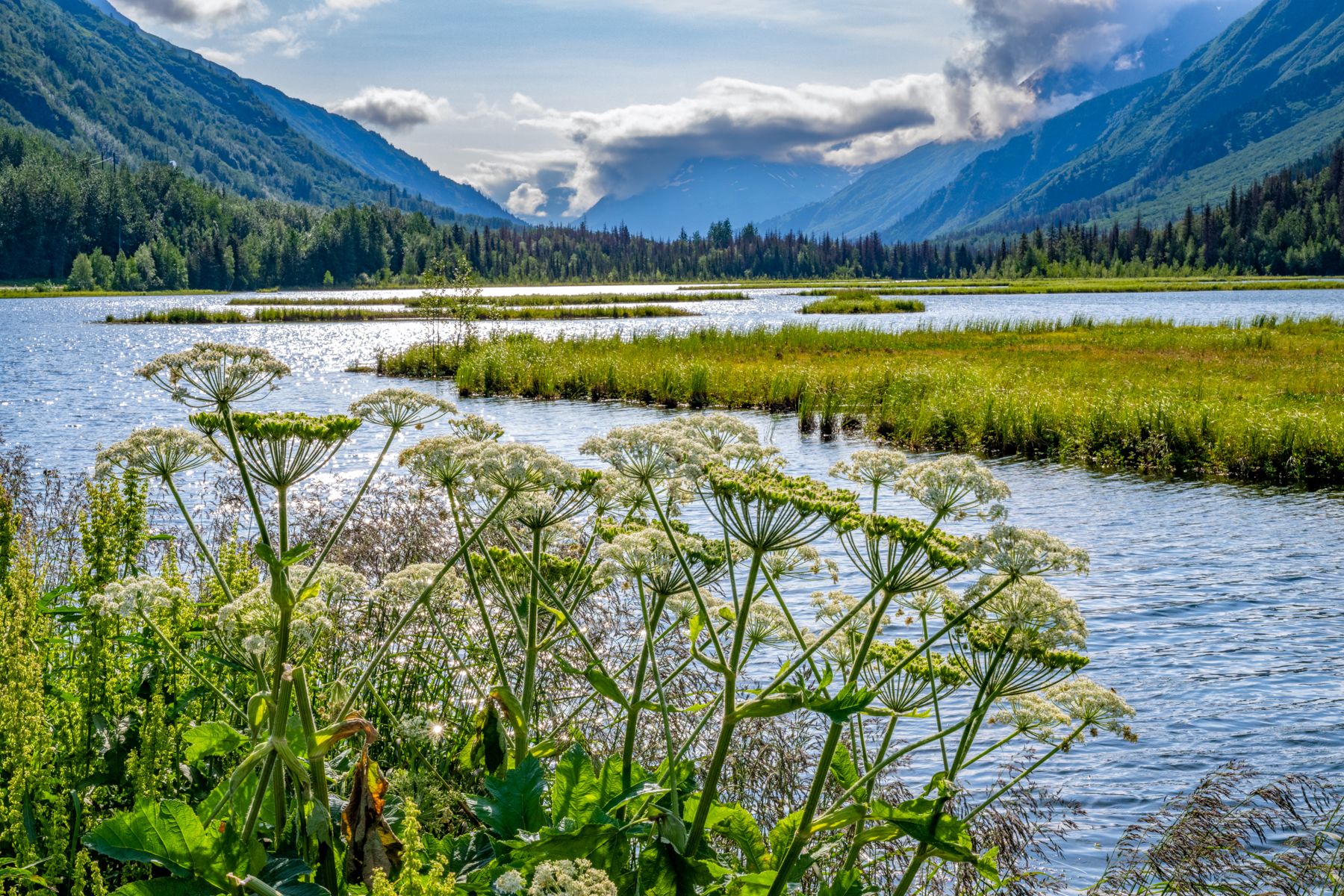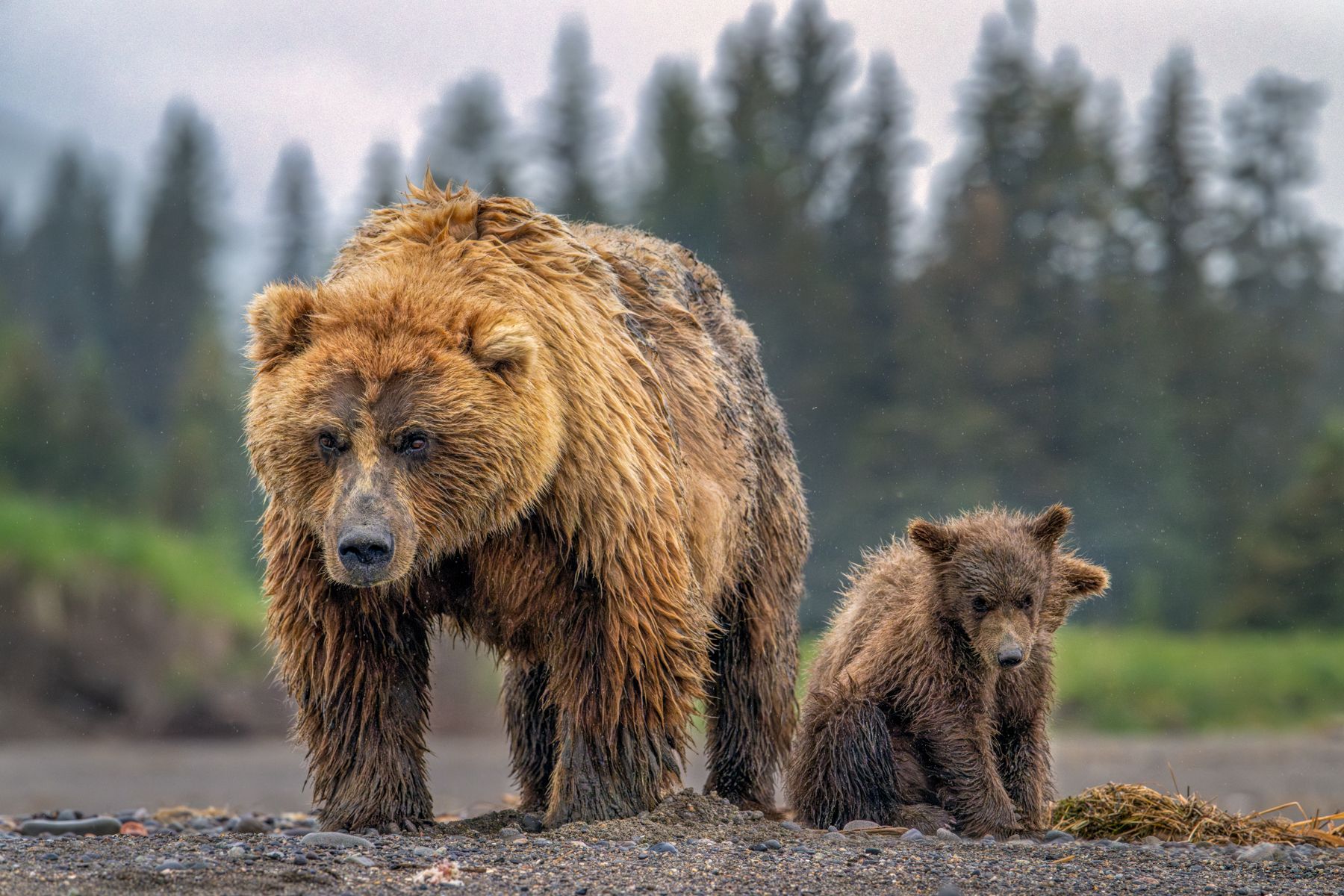The Kenai Peninsula is a picturesque region located in southern Alaska, known for its stunning natural landscapes and abundant wildlife. It is surrounded by the Gulf of Alaska on one side and the Cook Inlet on the other, offering a diverse range of landscape and wildlife photography opportunities. The peninsula is also home to the Kenai Fjords National Park, which showcases glaciers, fjords, and a thriving marine ecosystem.Our Kenai Trip began in Anchorage, Alaska. Since the Kenai region is not too far from Anchorage, we began our journey at sunrise with a drive down the Turnagain Arm inlet to the port town of Seward. Seward is known for its breathtaking scenery, with snow-capped mountains, crystal-clear waters, and rugged coastline. It is the gateway to Kenai Fjords National Park, which is accessible primarily by boat or bush plane.
Our private charter boat into Kenai Fjords National Park allowed us to tailor our excursion to maximize opportunities for wildlife and landscape photography. Our mission was to spot as many otters, puffins, orcas and whales as possible, and we were not disappointed. The abundant marine life in the region supports a healthy population of otters, which we spotted primarily in “rafts”. A "raft of otters" is a term used to describe a group or collection of otters floating together on water. Otters are social animals that often form these rafts for various reasons, such as safety, warmth, social interaction, and grooming. May of the groupings featured mother otters with their young, which is one of the most charming wildlife sightings possible.

Another feature of Kenai Fjords is the dramatic coastal scenery. Sea stacks and arches create mystical scenes in the coastal fog. Our boat captain maneuvered us into the perfect angles to get the best compositions for these stunning formations.


Our boat tour also featured a visit to Aialik Glacier, a large tidewater glacier located in Kenai Fjords National Park. Tidewater glaciers are glaciers that flow down valleys and terminate in the ocean, often producing icebergs as they calve (break off) into the water. We were treated to clear views of the glacier thanks to the clearing fog. Numerous seals floated on rafts of icebergs below the glacier, a haven from the predatory Orcas that patrol the less icy waters. We witnessed numerous calving events which created plunging icefalls and dramatic cracking sounds.

The sheer volume and variety of wildlife sightings made us feel like we never stopped shooting during our 9 hour tour, it was truly a magical day on the water - mission accomplished with all our requested wildlife sightings!
On the next leg of our trip we headed from Seward to the coastal town of Homer, passing through spectacular mountain scenery on the way and stopping at various viewpoints to capture the Alaskan splendor.

In Homer we stayed at Land’s End Resort, which is perfectly located at the end of the Homer Spit. The Homer Spit, often referred to simply as "The Spit," is a unique geographical feature located in Homer, Alaska, USA. It is a narrow, 4.5-mile long strip of land that extends into Kachemak Bay, which is part of the larger Cook Inlet. The Spit is formed by the deposition of sediments carried by the waves and currents from glaciers and rivers into the bay. Just steps from the hotel were amazing views of surrounding mountains and glaciers.
In Homer we eagerly anticipated one of the highlights of our trip, a day photographing the coastal brown bears in a remote location accessible only by plane. In order to beat an incoming rainstorm we left at sunrise in tiny Cessna airplanes for Lake Clark National Park. Our planes landed at low tide on a narrow beach where we could spot grizzly foraging for clams with their long claws. Our bear guide and pilot emphasized the need for us to appear as one large organism and stay together in a group as the bears approached us. None of us had ever been that close to wild grizzly bears before, but fortunately the bears were more interested in their clamming than us strange bipedal creatures. It was truly the experience of a lifetime to photograph these magnificent creatures in their natural environment.
The allocated time passed all too quickly as the pilot informed us of the incoming tide and the need to take off before our runway was inundated by the incoming tide. We had spent about 3 hours photographing these magnificent animals. On reflection as the plane departed I felt immense gratitude that their habitat was protected within the vast network of national parks and designated wilderness in Alaska. We were all excited to see our photos from the bear photography trip and gathered together at the hotel to review our shots. Everyone was thrilled with their photographs from this once in a lifetime experience.


The following day in Homer were were treated to yet another amazing boat trip to Kachemak Bay State Park, a 400,000-acre park in and around Kachemak Bay. This area features many sea bird rookeries and opportunities to spot marine mammals.

Near Homer there are multiple locations that are great for photographing bald eagles, so we spent time working on our skills capturing eagles in flight.


The final leg of our trip took us to the ski town of Girdwood and the Aleyeska Resort. This picturesque town is also within easy driving distance to the Portage Glacier, a massive glacier that descends from the Chugach Mountains and terminates at Portage Lake. We enjoyed a sunrise shoot capturing first light on the glacier and surrounding mountains. We also visited the Alaska Wildlife Conservation Center which provided wonderful opportunities to photograph more bears, along with moose, wolves, and other native Alaska wildlife.

Alaska kept sharing her beauty with us all the way back to Anchorage. On our final drive to the airport we were able to spot a family of Dall sheep up on the cliffs. A perfectly located turnout on the highway allowed us to grab our long lenses and spend time capturing these nimble creatures. Dall sheep are a species of wild sheep native to North America, known for their distinctive white coats and curved horns. They are well adapted to their harsh environment, using their keen agility and surefootedness to navigate steep terrains and evade predators.

![]()
![]()
![]()
![]()
![]()
![]()
![]()
![]()
![]()
![]()
![]()
![]()
![]()
![]()

